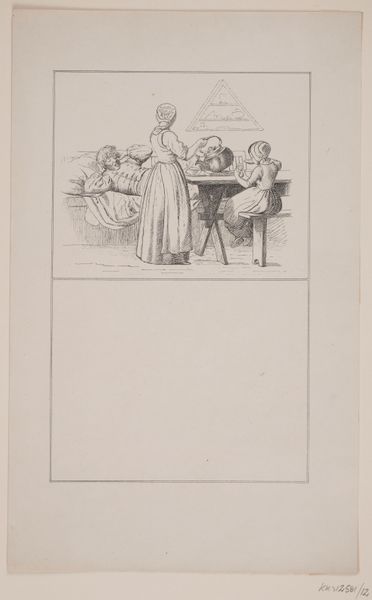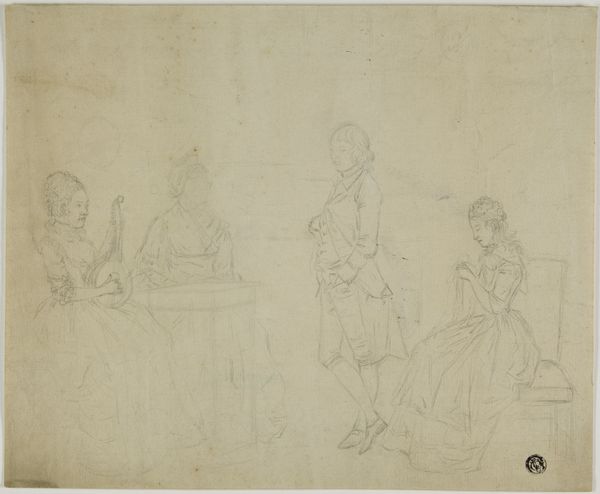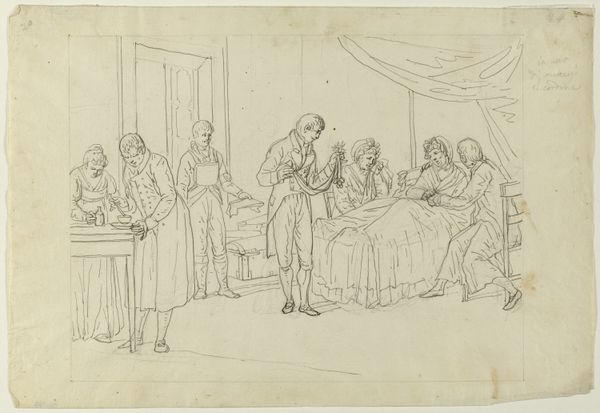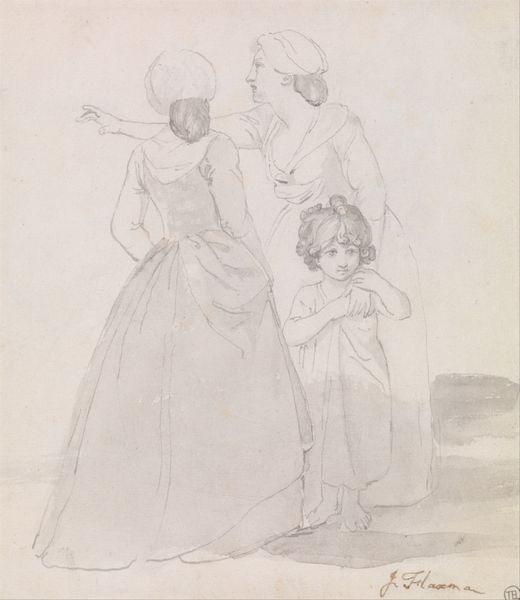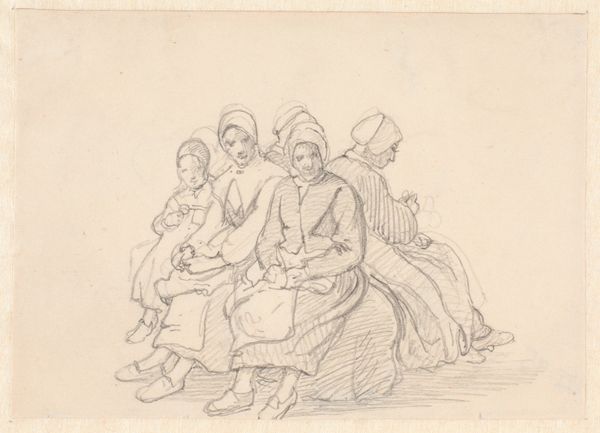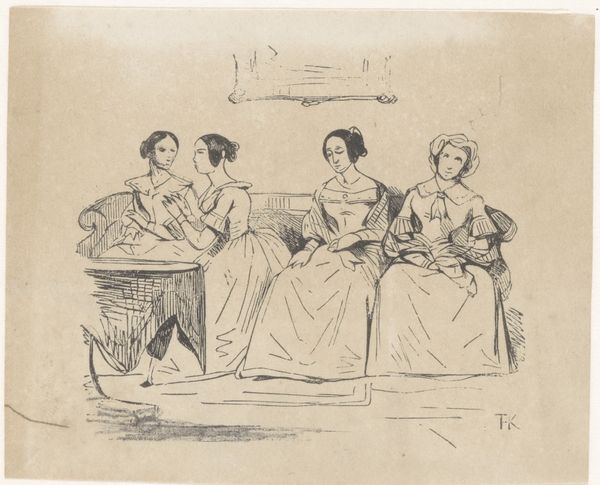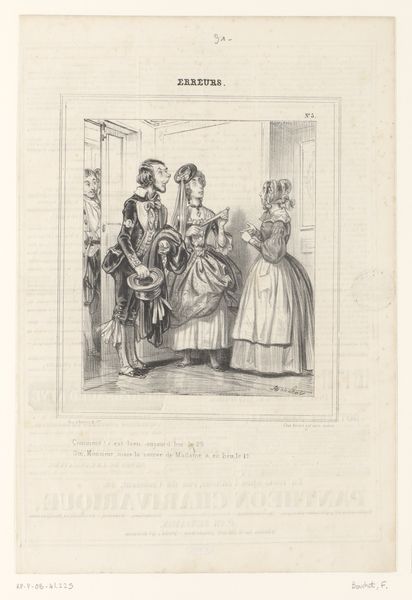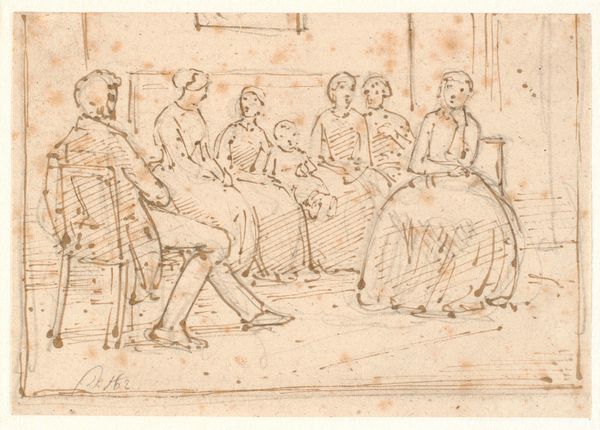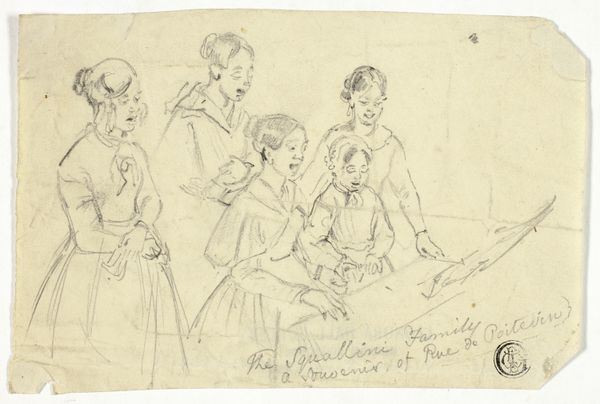
Mandsduet til klaverakkompagnement; desuden to damer 1840s
0:00
0:00
drawing, pencil
#
portrait
#
drawing
#
pencil sketch
#
romanticism
#
pencil
#
genre-painting
Dimensions: 223 mm (height) x 191 mm (width) (bladmaal)
Curator: Immediately I notice how light and airy it feels, even incomplete as a sketch. There’s a definite elegance captured in those light pencil strokes. Editor: Here we have Wilhelm Marstrand's "Mandsduet til klaverakkompagnement; desuden to damer", which translates to "Male duet with piano accompaniment; in addition, two ladies." It dates from the 1840s and gives us a glimpse into bourgeois entertainment during the Danish Golden Age. Curator: I’m intrigued by that very roughness. Look at the table, the visible strokes; it acknowledges the work and the *working* inherent to creation. Is this meant to be a preparatory study for a larger painting, or a work in itself? Editor: That’s a pertinent question! Considering Marstrand's career, predominantly as a history and genre painter, this drawing might indeed be a study. Pencil sketches like this served as crucial steps in developing larger, more polished works for public consumption. He's mapping out social dynamics as much as figures. Curator: The implied luxury is interesting – you’ve got the clothing, the piano. It tells a story of class and leisure time as material possessions made available, for what looks like, social advancement in society. Editor: Exactly! Music was a carefully cultivated skill, and gatherings like these reinforced social standing. Think about the space itself. Pianos became status symbols displayed in drawing rooms; tools in social mobility and acceptance, the bodies performing are tools, too! The woman turning her back feels so intentionally placed, she knows her place! Curator: The backs-turned lady seems excluded in her silence and perhaps serves a more decorative element to emphasize these rigid structures. Are her and the dueting gentlemen just performing status here, in a system they have been trapped into? Editor: Certainly, and I find it revealing how Marstrand chooses to depict this. His role as a Royal Danish Academy professor adds another layer; he's documenting the social theatre and simultaneously participating in shaping artistic taste and legitimizing these social structures. Curator: Food for thought, certainly. The artwork as a process really opened up some more subtle notes here than would otherwise come through in just looking at a fully finished and finalized painting. Editor: Indeed. Analyzing how an artist like Marstrand navigated his social and professional roles allows us a much richer understanding of art's function in shaping public life. It seems small, this moment in someone’s fancy house, but really is a telling cultural object!
Comments
No comments
Be the first to comment and join the conversation on the ultimate creative platform.

